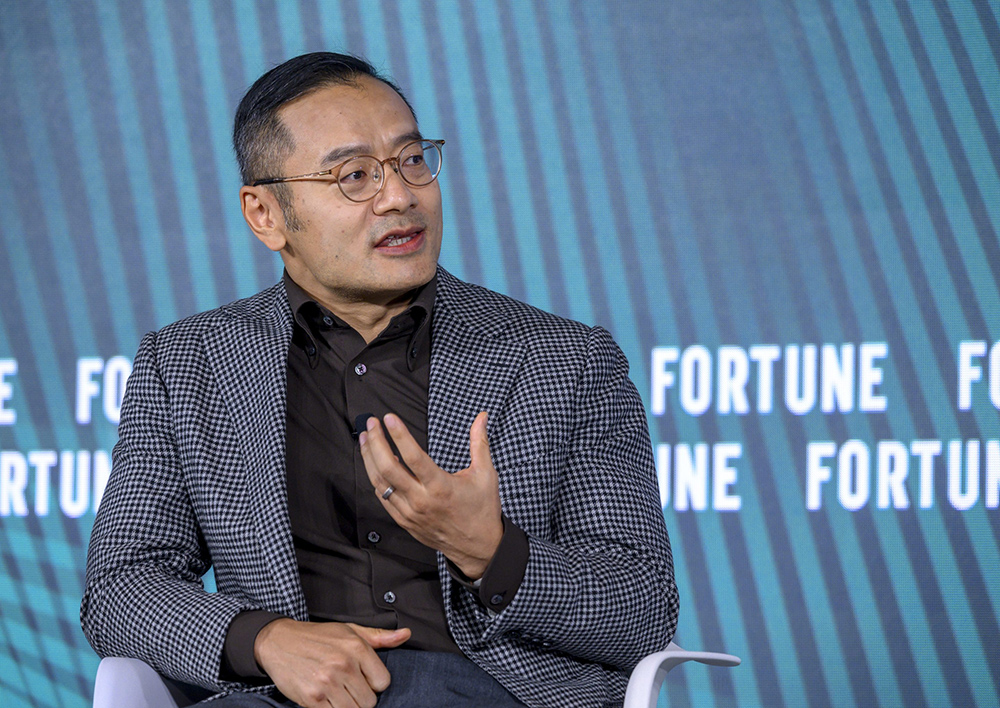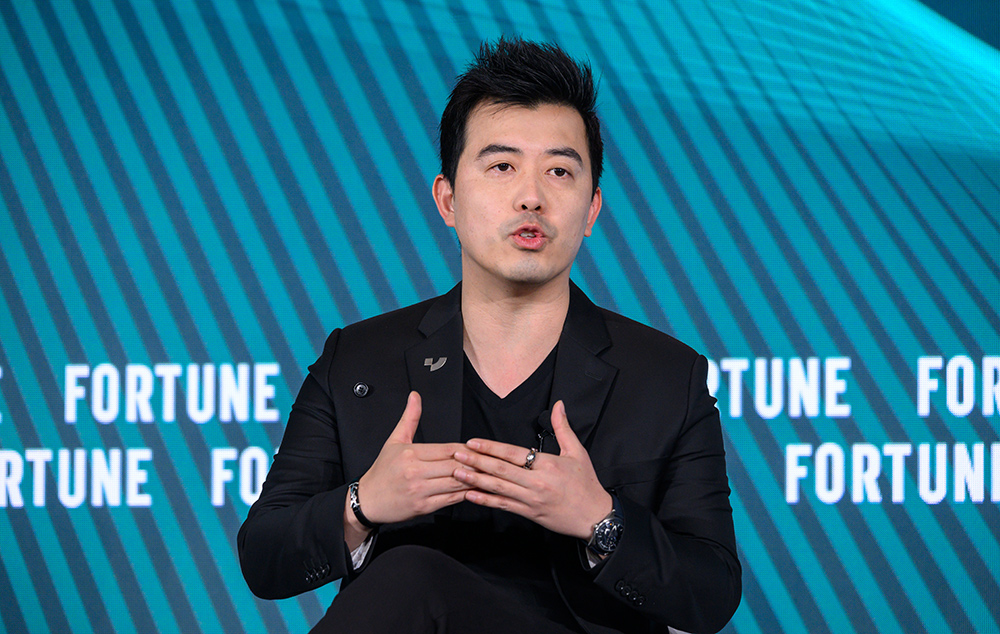中国电动汽车市场竞争激烈,车企推出新款的速度要翻倍

全球电动汽车行业的繁荣,实际上就是中国电动汽车繁荣的故事。受到政府补贴的吸引,中国消费者纷纷购买特斯拉(Tesla)和中国车企生产的电动汽车。沃伦·巴菲特投资的电动汽车巨头比亚迪(BYD)即将超越特斯拉,成为全球销量最大的电池驱动电动汽车厂商,而且其销量几乎全部来自本土销售。大量低价电动汽车帮助中国取代日本,成为全球最大的汽车出口国。
就连埃隆·马斯克也承认,中国将主导电动汽车市场。特斯拉CEO马斯克最近在《纽约时报》举办的一次会议上表示:“有许多人认为,未来的十大汽车厂商,排在第一位的是特斯拉,后面九家都将是中国汽车厂商。我认为他们说的没错。中国汽车厂商具有强大的竞争力。”
中国汽车厂商崛起的原因是什么?其中之一就是速度,中国电动汽车推出新车型的速度,远远超过国外同行。
在中国澳门召开的《财富》设计头脑风暴大会上,广汽集团(Guangzhou Automobile Group,GAC)的设计总监张帆表示:“对于老牌国际[整车厂商]而言,它们的产品正常情况下寿命周期是六至八年,产品开发周期为三至五年。”
他表示,中国车企的时间会缩短一半。他说道:“我们在同样的时间里能进行两次进化,而老牌车企只能[进行]一次,这是我们迅速发展的原因。”
他继续说道:“在中国,人人都在抓紧行动。所有人都想测试下一个重要产品。”
改变设计理念
更快的设计速度,也使中国车企有机会彻底重新思考汽车可以是什么样子。张帆表示:“UI、UX……上一代设计师们根本不需要考虑这些课题。”
自动驾驶品牌极越汽车(Jiyue Auto)的设计负责人Frank Wu表示,得益于语音通信和人工智能技术的创新,他的团队“可以去掉约90%的传统实体按钮”,这类似于一种“太空舱式的视觉设计语言”。[极越汽车是一家自动驾驶合资公司,中国车企吉利汽车(Geely)持有多数股份,科技巨头百度(Baidu)是关键合作伙伴之一。]
燃油汽车的传统功能,在电动汽车里已经没有存在的必要。例如,电动汽车没有内燃机汽车的制冷要求,这意味着电动汽车完全没有必要采用汽油车的经典组件前格栅。

一些车企正在考虑围绕电池更换进行汽车设计,使电动汽车只需要更换新电池就能完成快速“充电”,无需在充电桩排队等待电池充电。
但Frank Wu指出,企业追求换电模式,可能不得不改变汽车的设计。他认为,采用换电模式的汽车需要更厚重的设计。他说道:“这会提高乘客座椅的胯点,”使整车外形看起来比保时捷(Porsche)更高,或者说不太性感,而保时捷车身很低,车体很宽,有极佳的比例。”
蔚来(Nio)和小鹏(Xpeng)等中国行业新贵推出的新颖的电动汽车设计,开始引起其他汽车厂商的关注。保时捷首席设计师毛迈恪在10月末接受彭博社采访时表示:“这些初创公司,不会受到传统的束缚,它们可以采用截然不同的设计。它们的决策者们,例如管理委员会,因此思想更加开明。”
竞争
在中国电动汽车市场,广汽集团等传统车企,蔚来、小鹏等热门初创公司,以及比亚迪和特斯拉等电动汽车行业巨头展开了激烈竞争。(漏掉了哪些公司?日本、美国和德国车企。这些车企没有尽快意识到中国对电动汽车日益增长的需求。车企为了抢占市场份额,掀起了价格战。
广汽集团进军电动汽车市场的时间较晚,2017年才成立了一个专门负责电动汽车研发的部门。张帆表示:“我们感觉已经落后。”过去十年,中国政府一直在努力推动电动汽车行业发展,提供了数十亿美元生产和消费补贴。
张帆说道:“我们是一家国有企业,却在这方面做得并不好。我们有一种负罪感,因此我们必须在电动汽车市场有所作为。”
Frank Wu表示,汽车价格昂贵,买车就像买房一样,而不是像买手机那么简单。 “人们会给汽车附上许多情感因素。”一辆汽车可以价格低廉,技术先进,但“如果它没有出众的外形……我认为这不会成为吸引人们购买商品的卖点。”
但张帆发现,虽然中国大多数电动汽车厂商都试图塑造一种独特的形象,却都选择了类似的设计,例如去掉前格栅。他说道:“人人都想有新的外观,但……这种新外观却高度雷同。”
他还承认,他并不确定好的设计,是否足以在竞争异常激励的中国电动汽车市场中取胜。他说道:“我们要面对现实。设计师不负责决策。我们是支持者。我们是顾问。但我们不是决策者。”(财富中文网)
翻译:刘进龙
审校:汪皓
全球电动汽车行业的繁荣,实际上就是中国电动汽车繁荣的故事。受到政府补贴的吸引,中国消费者纷纷购买特斯拉(Tesla)和中国车企生产的电动汽车。沃伦·巴菲特投资的电动汽车巨头比亚迪(BYD)即将超越特斯拉,成为全球销量最大的电池驱动电动汽车厂商,而且其销量几乎全部来自本土销售。大量低价电动汽车帮助中国取代日本,成为全球最大的汽车出口国。
就连埃隆·马斯克也承认,中国将主导电动汽车市场。特斯拉CEO马斯克最近在《纽约时报》举办的一次会议上表示:“有许多人认为,未来的十大汽车厂商,排在第一位的是特斯拉,后面九家都将是中国汽车厂商。我认为他们说的没错。中国汽车厂商具有强大的竞争力。”
中国汽车厂商崛起的原因是什么?其中之一就是速度,中国电动汽车推出新车型的速度,远远超过国外同行。
在中国澳门召开的《财富》设计头脑风暴大会上,广汽集团(Guangzhou Automobile Group,GAC)的设计总监张帆表示:“对于老牌国际[整车厂商]而言,它们的产品正常情况下寿命周期是六至八年,产品开发周期为三至五年。”
他表示,中国车企的时间会缩短一半。他说道:“我们在同样的时间里能进行两次进化,而老牌车企只能[进行]一次,这是我们迅速发展的原因。”
他继续说道:“在中国,人人都在抓紧行动。所有人都想测试下一个重要产品。”
改变设计理念
更快的设计速度,也使中国车企有机会彻底重新思考汽车可以是什么样子。张帆表示:“UI、UX……上一代设计师们根本不需要考虑这些课题。”
自动驾驶品牌极越汽车(Jiyue Auto)的设计负责人Frank Wu表示,得益于语音通信和人工智能技术的创新,他的团队“可以去掉约90%的传统实体按钮”,这类似于一种“太空舱式的视觉设计语言”。[极越汽车是一家自动驾驶合资公司,中国车企吉利汽车(Geely)持有多数股份,科技巨头百度(Baidu)是关键合作伙伴之一。]
燃油汽车的传统功能,在电动汽车里已经没有存在的必要。例如,电动汽车没有内燃机汽车的制冷要求,这意味着电动汽车完全没有必要采用汽油车的经典组件前格栅。
一些车企正在考虑围绕电池更换进行汽车设计,使电动汽车只需要更换新电池就能完成快速“充电”,无需在充电桩排队等待电池充电。
但Frank Wu指出,企业追求换电模式,可能不得不改变汽车的设计。他认为,采用换电模式的汽车需要更厚重的设计。他说道:“这会提高乘客座椅的胯点,”使整车外形看起来比保时捷(Porsche)更高,或者说不太性感,而保时捷车身很低,车体很宽,有极佳的比例。”
蔚来(Nio)和小鹏(Xpeng)等中国行业新贵推出的新颖的电动汽车设计,开始引起其他汽车厂商的关注。保时捷首席设计师毛迈恪在10月末接受彭博社采访时表示:“这些初创公司,不会受到传统的束缚,它们可以采用截然不同的设计。它们的决策者们,例如管理委员会,因此思想更加开明。”
竞争
在中国电动汽车市场,广汽集团等传统车企,蔚来、小鹏等热门初创公司,以及比亚迪和特斯拉等电动汽车行业巨头展开了激烈竞争。(漏掉了哪些公司?日本、美国和德国车企。这些车企没有尽快意识到中国对电动汽车日益增长的需求。车企为了抢占市场份额,掀起了价格战。
广汽集团进军电动汽车市场的时间较晚,2017年才成立了一个专门负责电动汽车研发的部门。张帆表示:“我们感觉已经落后。”过去十年,中国政府一直在努力推动电动汽车行业发展,提供了数十亿美元生产和消费补贴。
张帆说道:“我们是一家国有企业,却在这方面做得并不好。我们有一种负罪感,因此我们必须在电动汽车市场有所作为。”
Frank Wu表示,汽车价格昂贵,买车就像买房一样,而不是像买手机那么简单。 “人们会给汽车附上许多情感因素。”一辆汽车可以价格低廉,技术先进,但“如果它没有出众的外形……我认为这不会成为吸引人们购买商品的卖点。”
但张帆发现,虽然中国大多数电动汽车厂商都试图塑造一种独特的形象,却都选择了类似的设计,例如去掉前格栅。他说道:“人人都想有新的外观,但……这种新外观却高度雷同。”
他还承认,他并不确定好的设计,是否足以在竞争异常激励的中国电动汽车市场中取胜。他说道:“我们要面对现实。设计师不负责决策。我们是支持者。我们是顾问。但我们不是决策者。”(财富中文网)
翻译:刘进龙
审校:汪皓
The story of the global EV boom is really the story of China’s EV boom. The country’s consumers, attracted by government subsidies, are flocking to electric cars made by Tesla and its Chinese competitors. BYD, the EV giant backed by Warren Buffett, is close to overtaking Tesla as the world’s largest seller of battery-powered electric vehicles, almost entirely from local sales. And the flood of cheap EVs has helped China overtake Japan as the world’s largest car exporter.
Even Elon Musk accepts that China is set to dominate the EV market. “There’s a lot of people out there who think that the top 10 car companies are going to be Tesla followed by nine Chinese car companies. I think they might not be wrong,” the Tesla CEO recently said at a New York Times conference. “The Chinese car companies are extremely competitive.”
One reason for that? Speed, as Chinese EV makers pump out new models at a far greater pace than their foreign counterparts.
“For the established, the international [original equipment manufacturers], normally they have six to eight years of lifetime for the product, and three to five years for development,” Zhang Fan, head of design for state-owned carmaker Guangzhou Automobile Group (GAC), said last week at the Fortune Brainstorm Design conference in Macau.
Chinese companies do all that in half the time, he suggested. “With the same amount of time, we’ve been evolving twice while the establishment only [does] once, so that’s why we are growing so fast,” he said.
“In China, everybody’s pushing forward. Everybody’s trying to test the next big thing,” he continued.
Design changes
That speed is also giving Chinese carmakers the opportunity to radically rethink what a car might look like. “UI, UX … those are topics designers in the last generation never needed to worry about,” Zhang said.
Frank Wu, head of design for automated driving brand Jiyue Auto, said that his team was “able to get rid of probably 90% of our traditional physical buttons” thanks to innovations in voice communication and artificial intelligence, deeming it similar to a “spaceship cabin sort of visual design language.” (Jiyue is an automated driving joint venture, majority-owned by Chinese carmaker Geely with tech giant Baidu as a key partner.)
Long-standing features in gas-powered cars aren’t needed in an electric vehicle. For example, EVs don’t have the same cooling requirements as cars powered by internal combustion engines. That means the front grille, a classic component of petrol cars, is entirely unnecessary.
Some companies are considering designing cars around battery-swapping, allowing EVs to “recharge” quickly by just putting in a new battery, rather than waiting first for space at a charging station, then waiting for the battery to recharge.
But Wu noted that pursuing a battery-swapping model would also force a car’s design to change. Cars that rely on battery-swapping will need thicker designs, he suggested. “That raises the hip point of your passenger seating,” he said, making “the overall package of the car look a little bit taller—or a little bit less sexy—compared to a Porsche type, where the car is very low, very wide, with a beautiful proportion.”
Other car manufacturers are starting to realize the novelty of Chinese EV designs from up-and-coming startups like Nio and Xpeng. “These startups, with no heritage, they can do things completely different,” Porsche chief designer Michael Mauer told Bloomberg in a late October interview. “That makes the decision-makers, i.e. the management board, more open-minded.”
The competition
China’s EV market is mired in fierce competition between legacy carmakers like GAC, buzzy startups like Nio and Xpeng, and EV giants like BYD and Tesla. (Who’s missing? Japanese, U.S., and German carmakers, who were slow to recognize China’s growing appetite for electric cars.) The sector has been locked in a price war as companies seek to capture market share.
Guangzhou Automobile Group is a late entrant to the Chinese EV market, only starting up a division dedicated to EV development in 2017. “We feel we were left behind,” Zhang said. Beijing has been pushing the development of electric vehicles for over a decade, offering billions of dollars in both production and consumption subsidies—which made things politically awkward for GAC.
“We are a state-owned company, and we were not doing so good. So we feel guilty, and therefore we had to do something,” he said.
Wu noted that cars are expensive, more akin to buying a house than a phone. “There’s a lot of things people are emotionally attached to when they see a car.” A car may be cheap and technologically advanced, but “if it doesn’t look good … I don’t think that’s a driving point to somebody buying that product.”
Zhang, on the other hand, observed that most of China’s EV companies were settling on similar designs—like removing the front grille—despite trying to carve a unique identity. “Everybody is trying to [have a] new look, but … this new look looks very similar to each other,” he said.
The GAC executive also admitted that he wasn’t sure that good designs were enough to win in China’s hypercompetitive EV market. “We have to be realistic. Designers don’t make the decision. We are the supporter. We are the advisor. But we are not the decider,” he said.













